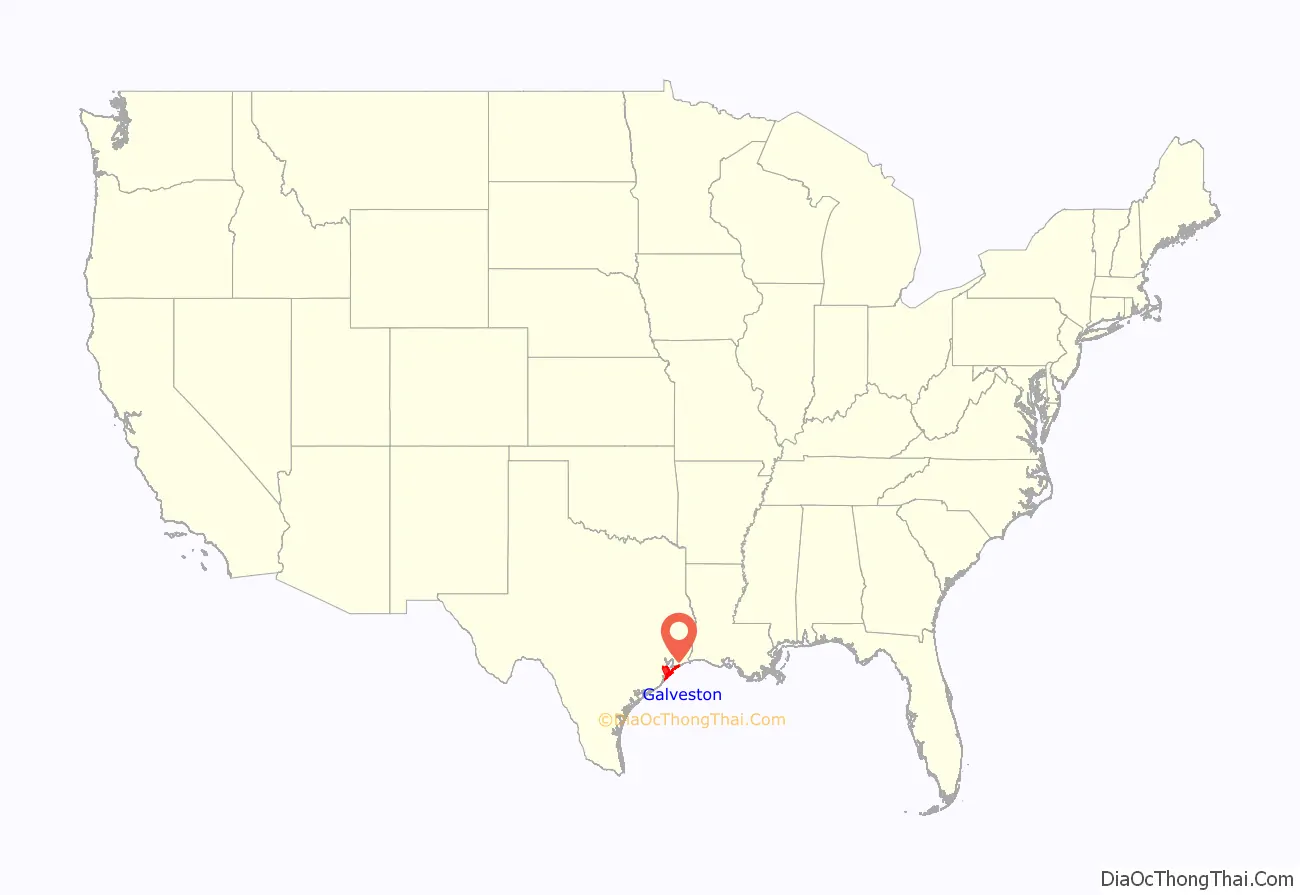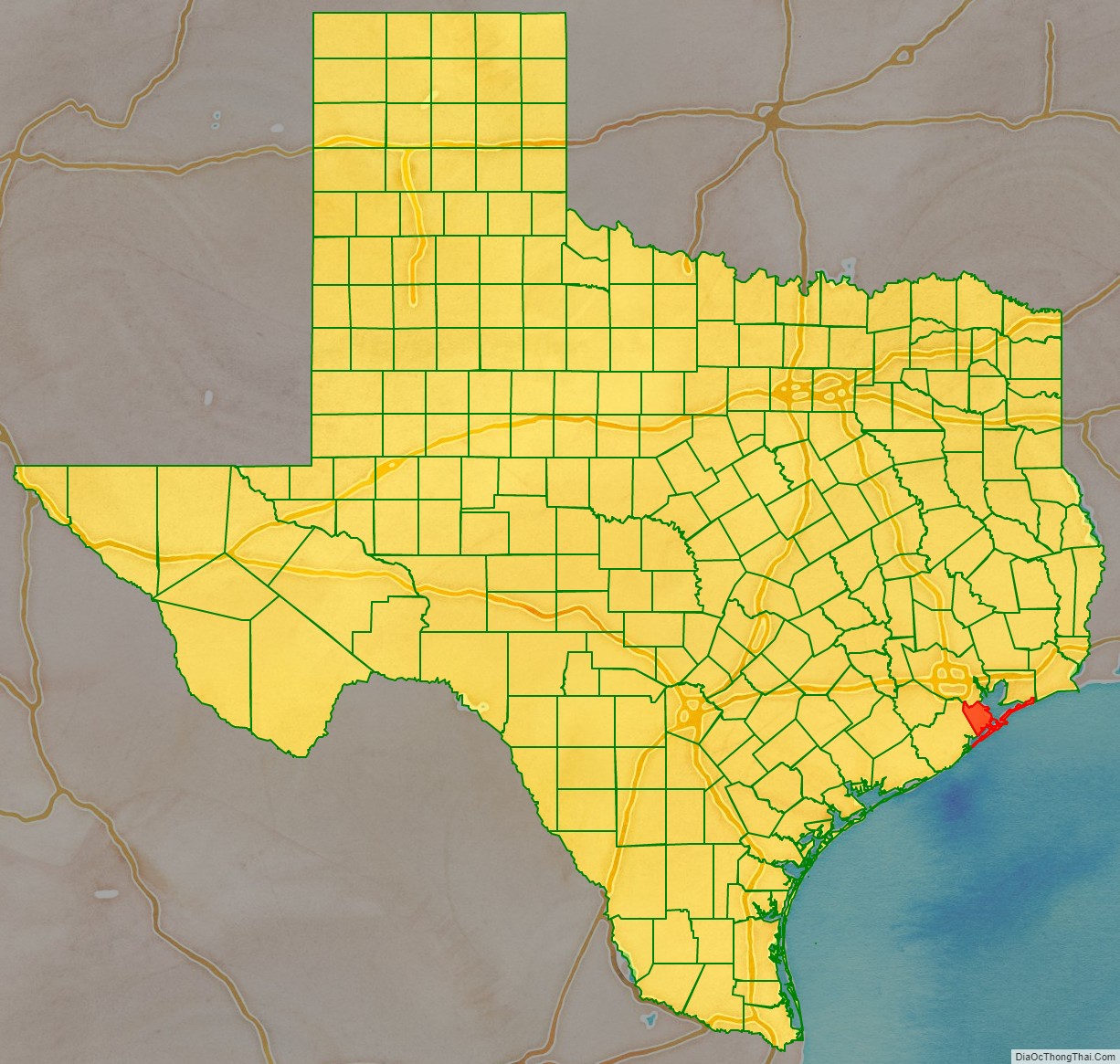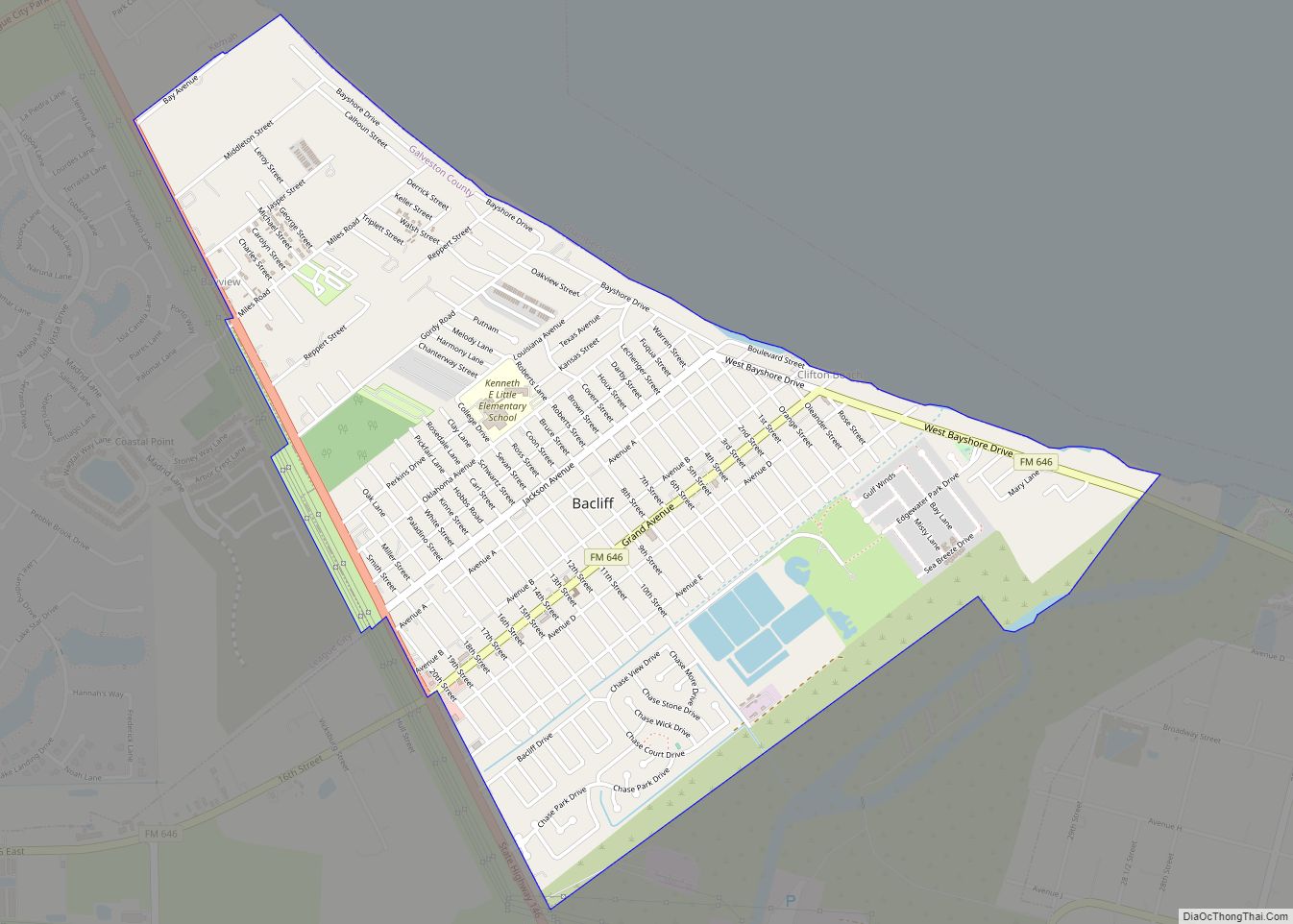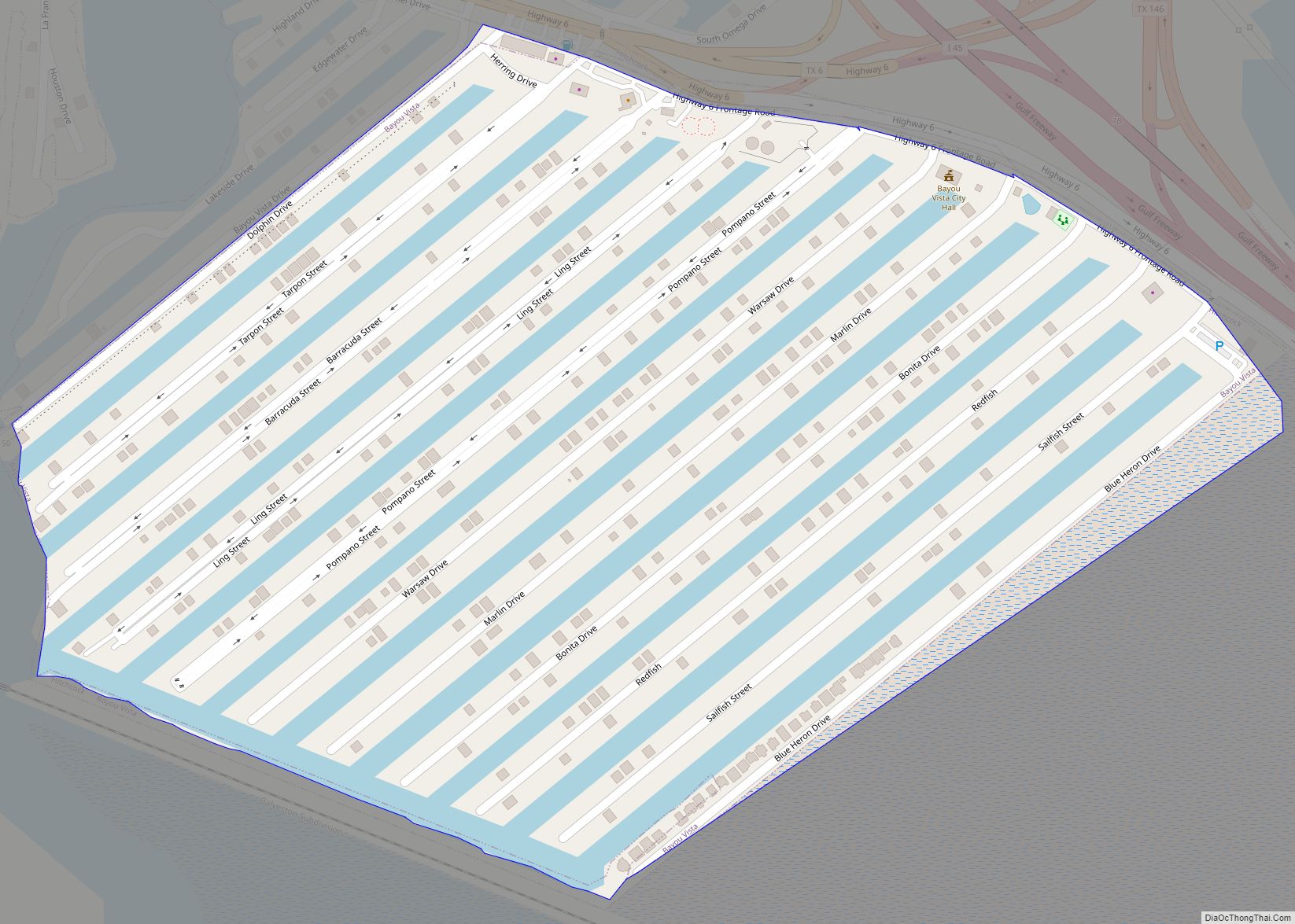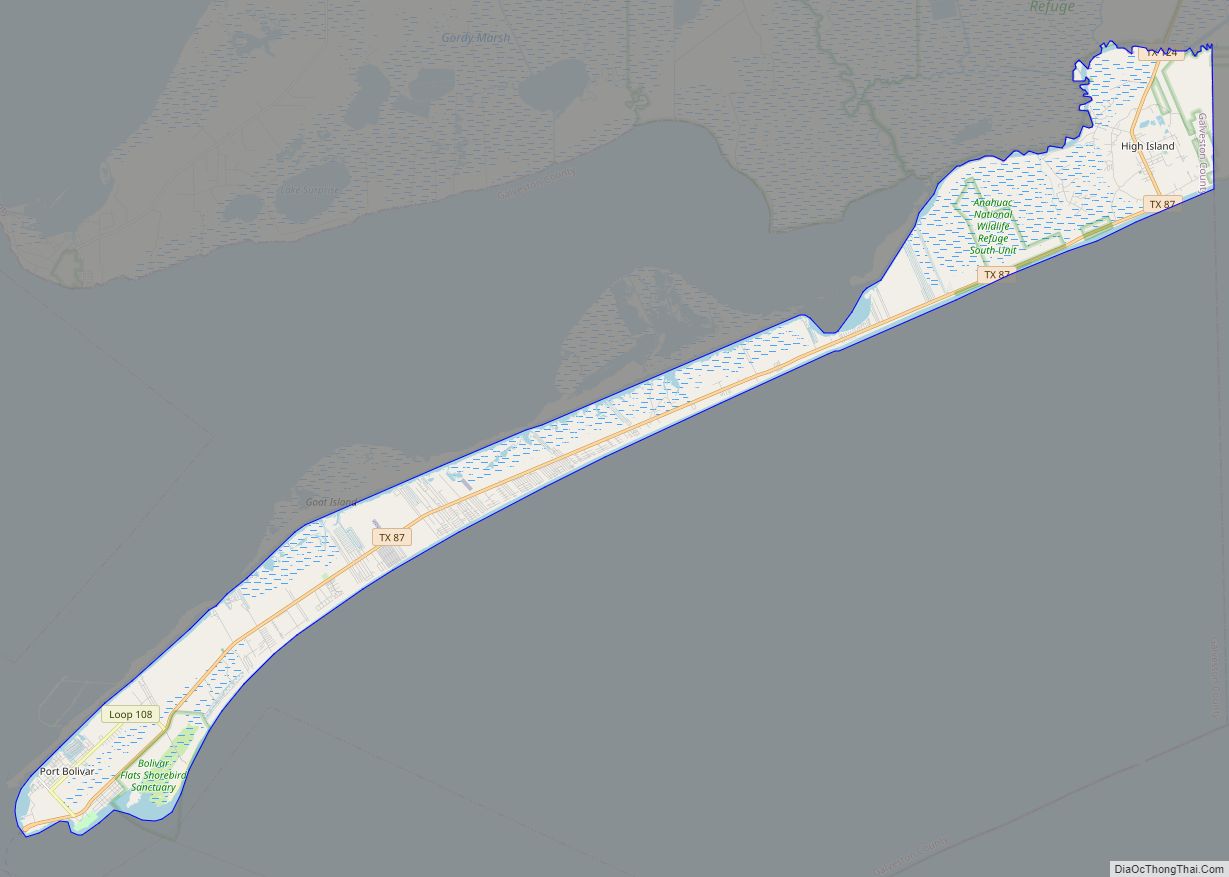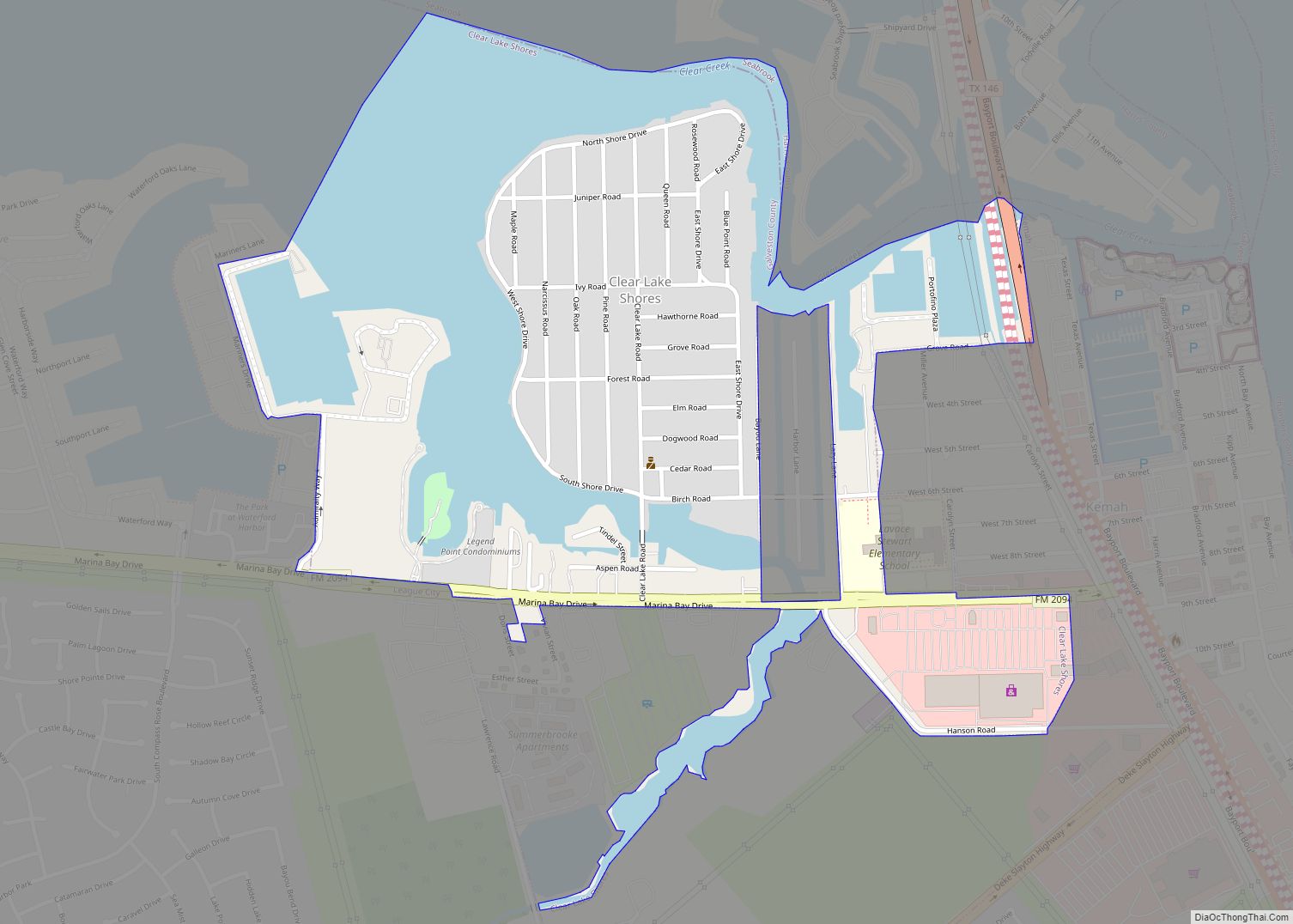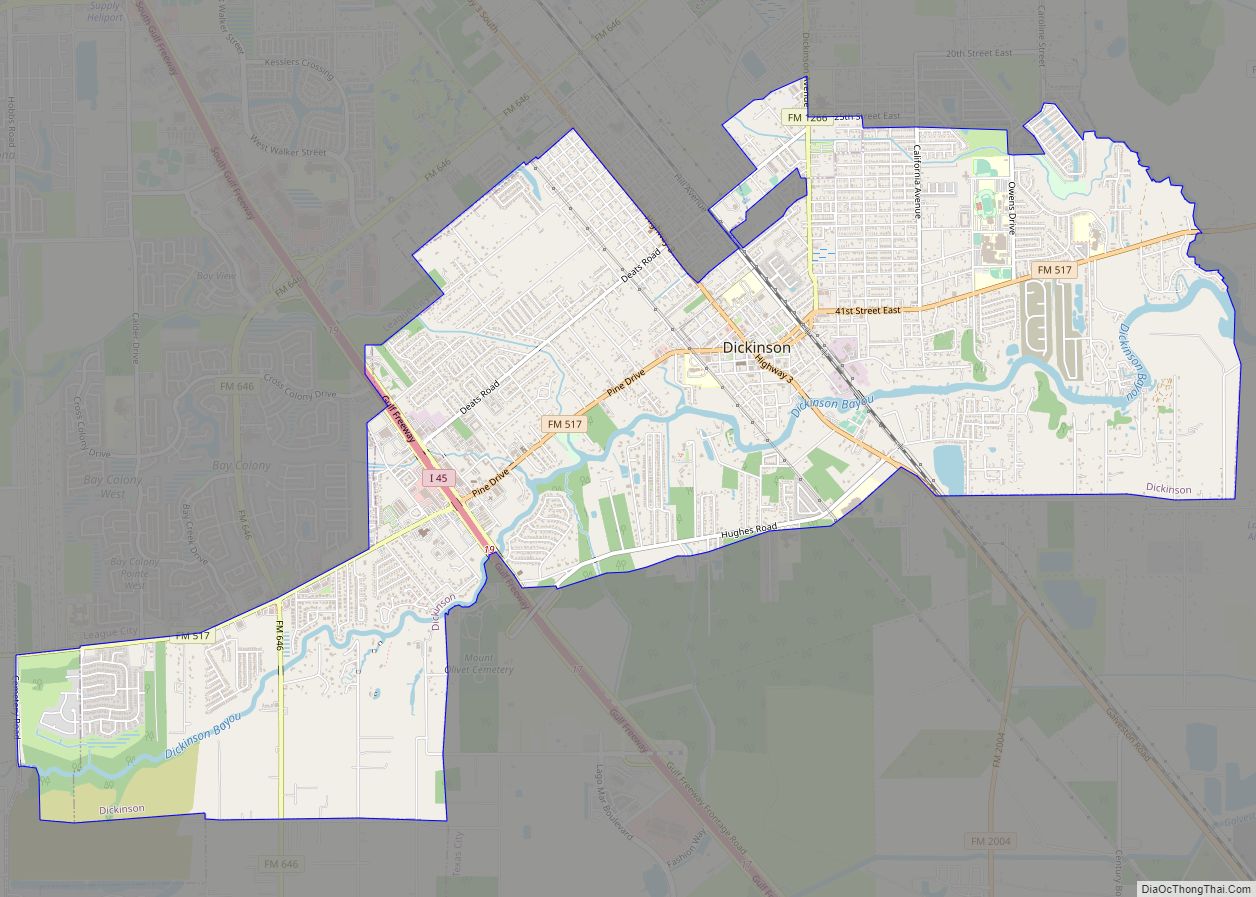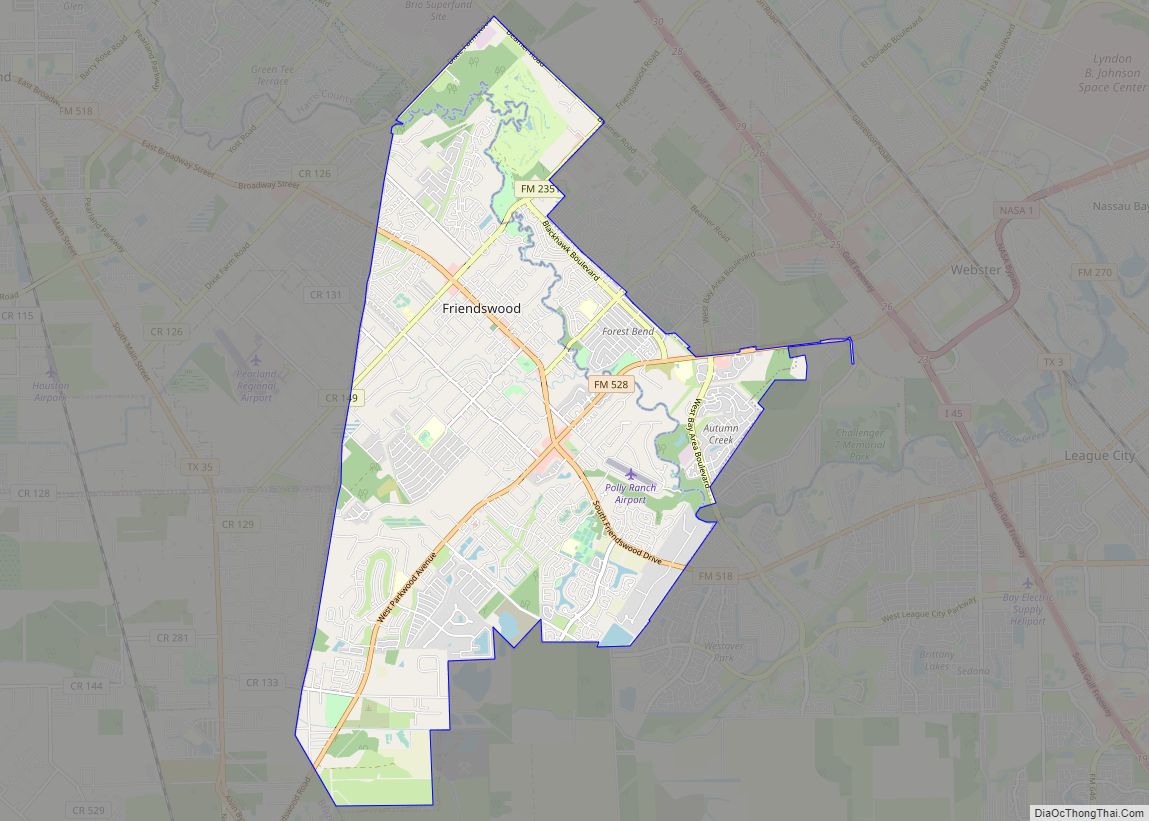Galveston County (/ˈɡælvɪstən/ GAL-vis-tən) is a county in the U.S. state of Texas, located along the Gulf Coast adjacent to Galveston Bay. As of the 2020 census, its population was 350,682. The county was founded in 1838. The county seat is the City of Galveston, founded the following year, and located on Galveston Island. The most-populous municipality in the county is League City, a suburb of Houston at the northern end of the county, which surpassed Galveston in population during the early 2000s.
Galveston County is part of the nine-county Houston–The Woodlands–Sugar Land (Greater Houston) metropolitan statistical area.
| Name: | Galveston County |
|---|---|
| FIPS code: | 48-167 |
| State: | Texas |
| Founded: | 1838 |
| Named for: | City of Galveston |
| Seat: | Galveston |
| Largest city: | League City |
| Total Area: | 874 sq mi (2,260 km²) |
| Land Area: | 378 sq mi (980 km²) |
| Total Population: | 350,682 |
| Population Density: | 400/sq mi (150/km²) |
| Time zone: | UTC−6 (Central) |
| Summer Time Zone (DST): | UTC−5 (CDT) |
| Website: | www.galvestoncountytx.gov |
Galveston County location map. Where is Galveston County?
History
Sixteenth-century Spanish explorers knew Galveston Island as the Isla de Malhado, the “Isle of Misfortune”, or Isla de Culebras, the “Isle of Snakes”. In 1519, an expedition led by Alonso Álvarez de Pineda actually sailed past Galveston Island while charting the route from the Florida peninsula to the Pánuco River. The information gathered from the expedition enabled the Spanish government to establish control over the entire Gulf Coast, including Galveston Island. In 1783, José Antonio de Evia, a Spanish navigator, surveyed the area and named the bay “Galveston” to honor Bernardo de Gálvez, who supported the United States in the Revolutionary War.
Galveston County was formally established under the Republic of Texas on May 15, 1838. The county was formed from territory taken from Harrisburg, Liberty, and Brazoria Counties, with governmental organization taking place in 1839. The island and city of Galveston by far formed the most important population center. The city of Galveston was the republic’s largest city and its center of commerce and culture. Port Bolivar on the Bolivar Peninsula was a port of secondary importance. Other development in the area was initially mostly ranching interests and small farming communities. Texas soon joined the United States, and Galveston’s importance continued to grow as it came to dominate the worldwide cotton trade. As railroads between Galveston, Harrisburg, Houston, and other towns were built during the 19th century, small communities grew up along the rail lines. Nevertheless, Galveston continued to remain a prominent destination for the shipping and trade industries. A bridge was completed in 1859, when the Galveston, Houston, and Henderson Railroad built a wooden trestle that was used by all other railway lines to the island until 1875, when the Gulf, Colorado and Santa Fe Railway built its own bridge. At the end of the 19th century, a group of investors established Texas City directly across the West Bay from Galveston, with the hope of making it a competing port city. The port began operations just before the start of the 20th century.
The 1900 Galveston Hurricane devastated the county, killing an estimated 6000 people on the island alone and numerous others in the rest of the county. The Port of Galveston was closed for a time during reconstruction, but recovery was swift and profound. By 1910, the county’s citizens had developed the commission form of government, constructed the seawall, and raised the merit of the whole city.
Investors had worried that the Texas coast was a dangerous place to establish major commercial operations because of the threat of hurricanes, and the 1900 disaster seemed to prove that. Though Galveston rebuilt its port and other major operations quickly, major investment moved inland, largely to Houston. Soon, Houston and Texas City had outpaced Galveston as major ports.
The oil boom in Texas began in 1901, and pipelines and refineries soon were built in Texas City. Industrial growth blossomed, especially during World War II. Galveston’s manufacturing sector, however, was more stagnant during the 20th century.
Galveston, traditionally an attractive tourist destination even before the storm, transformed itself into a major, nationally known destination. Around this time, entrepreneur, power broker, and racketeer Sam Maceo rose to power and transformed the island in what was known as the Free State of Galveston. During this time, the city was home to many casinos, whorehouses, and speakeasies, in addition to becoming a center of culture, economy, and nightlife, all due to the free availability of gambling and alcohol. The city’s entertainment business spread throughout the county with major casino districts in Kemah and Dickinson enabled by a lax attitude among law enforcement in the county (Houstonians often humorously referred to the Galveston County line as the “Maceo-Dickinson line”). The county prospered as oil fueled Texas City’s industrial growth, and wealthy tourists flocked to Galveston and the other entertainment districts.
The gambling empire was destroyed in the 1950s, as state law enforcement dismantled its establishments. Galveston’s economy crashed, as did the economies of some other county municipalities that were dependent on tourism. Texas City’s economy weathered the storm because of its strong industry.
The establishment on NASA’s Johnson Space Center in 1963 soon created new growth opportunities for the county municipalities near Clear Lake and Harris County. The Clear Lake area communities in Harris and Galveston Counties soon became more tied together, while the island of Galveston languished for many years as businesses increasingly left for the mainland.
Tourism has gradually resurged, both on the island and on the mainland, and today has become a major industry in the county. Aerospace and related service industries continue to be important in the Clear Lake area of the county. Texas City has become an important petrochemical center.
Galveston County Road Map
Geography
According to the United States Census Bureau, the county has a total area of 874 square miles (2,260 km), of which 495 square miles (1,280 km) (57%) is covered by water.
Galveston County is located on the plains of the Texas Gulf Coast in the southeastern part of the state. The county is bounded on the northeast by Galveston Bay and on the northwest by Clear Creek and Clear Lake. Much of the county covers Galveston Bay, and is bounded to the south by the Galveston Seawall and beaches on the Gulf of Mexico.
Adjacent counties
- Harris County (north)
- Chambers County (northeast)
- Gulf of Mexico (southeast)
- Brazoria County (west)
